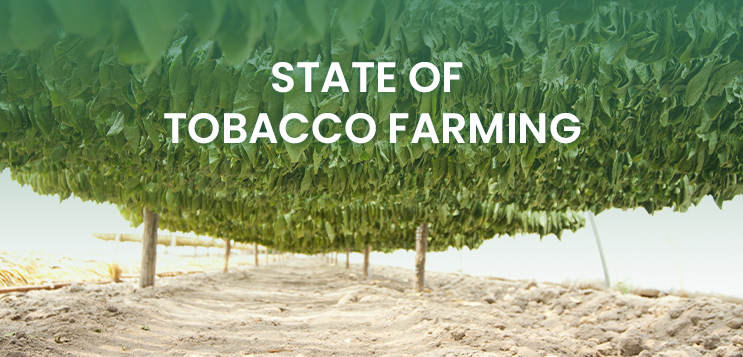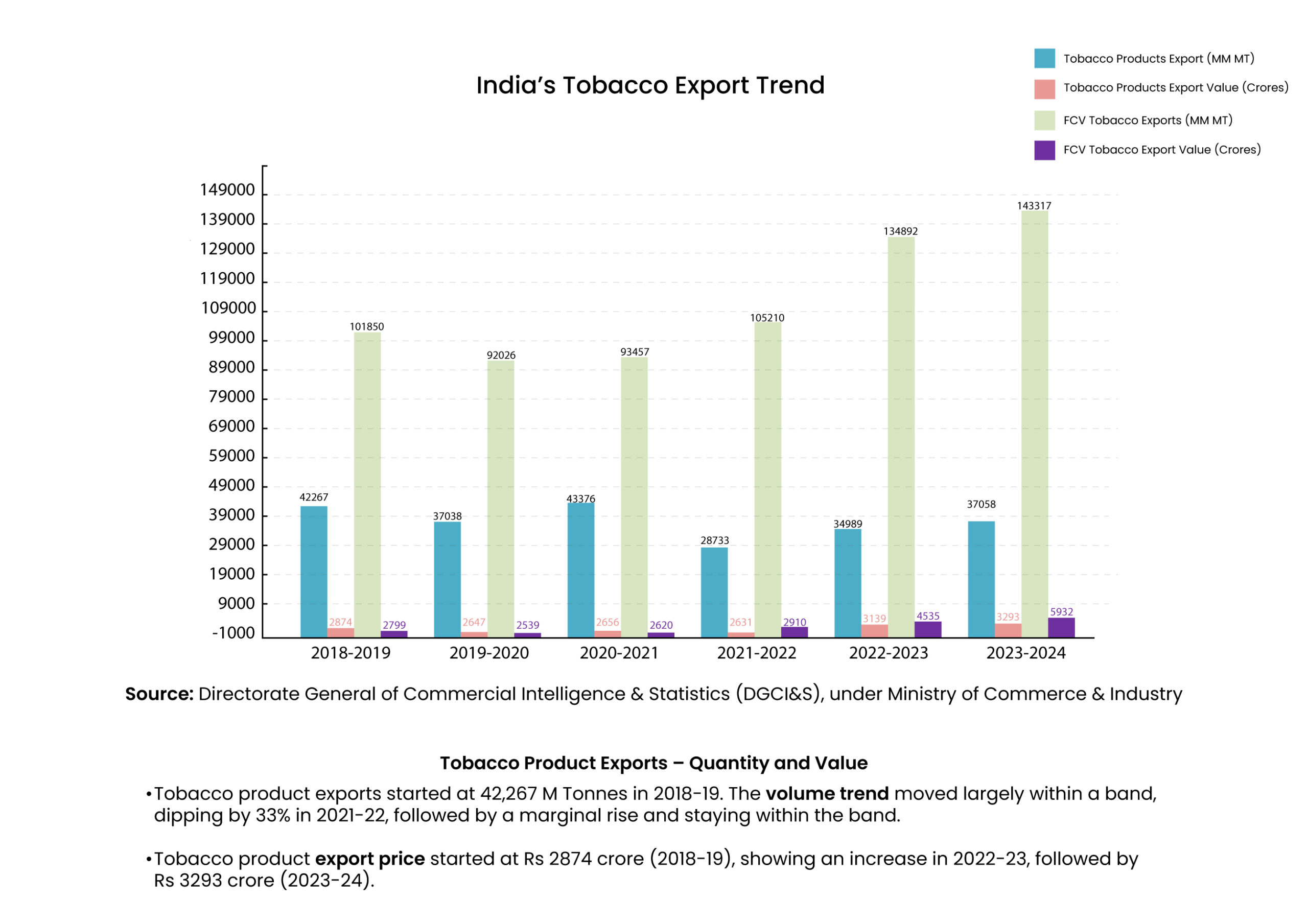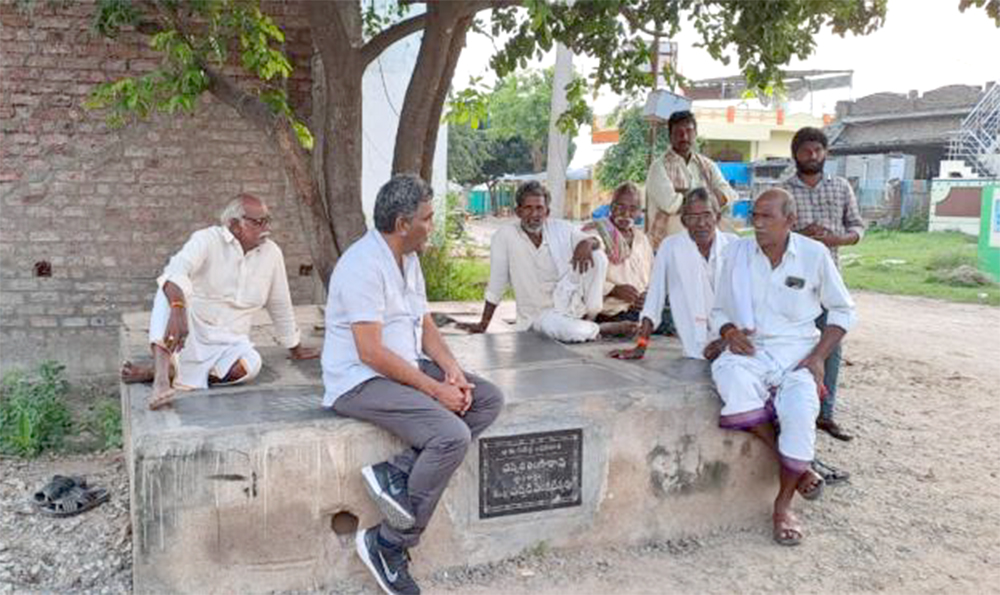
Tobacco holds a key position in India’s agricultural sector and economy. Its adaptability to varying climates and soil types, along with its profitability, make it a significant crop across many states such as Andhra Pradesh, Karnataka, Gujarat, West Bengal and Tamil Nadu. It has uniquely positioned India as the second largest producer after China and second largest exporter after Brazil. The state of Andhra Pradesh is the largest producers of Flue Cured Virginia (FCV) tobacco in the country and the largest exporter, with significant economic contribution to the state exchequer. The crop is primarily grown in regions like East Godavari, West Godavari, Prakasam, Guntur, Kurnool, Krisna and Nellore (In 2022, new districts have been carved out from existing districts).

Understanding the FCV Tobacco Landscape as the EGD Looms
As a cash crop, tobacco offers better returns than many alternatives for Indian farmers. Hence, they persist with it despite its challenges. The FCV tobacco continues to be a favoured crop amongst tobacco farmers of Andhra Pradesh, with attractive prices it commands in domestic and overseas markets. Its increased production over the years has been the result of favourable climatic and soil conditions, aided by scientifically driven agricultural practices.

Source: Directorate General of Commercial Intelligence & Statistics (DGCI&S), under Ministry of Commerce & Industry]
Studying the Existing State of FCV Tobacco Cultivation: How Did We Do It?
To gain a deeper understanding of tobacco cultivation and its related issues, Sustainable Alternatives visited a total of 11 villages – 4 villages each in Prakasam and Guntur, and 3 villages in West Godavari- and interacted with a total of 60 farmers cultivating tobacco on a land area of over 1024 acres. Of the 60 farmers the team met, 40 are cultivating FCV and 20 are cultivating Burley. Among these 40 farmers, FCV is being cultivated on an area of 903.2 acres, and 20 farmers are collectively cultivating Burley on an area of 121 acres. Most of these farmers have been cultivating tobacco for an average of over 25 years. Through the discussions, several key challenges became apparent, including:
- Labour shortage – Tobacco cultivation is a labour-intensive process. Labour demand peaks during planting, and only farmers who can pay higher wages secure labour early, gaining an advantage. Despite higher rates, many still struggle to find enough workers.
- Cost of capital – FCV farmers can obtain larger loans from banks than Burley farmers due to stronger support and oversight from the Tobacco Board.
- Erratic weather and natural calamities – Unpredictable cyclones and rains during the Oct-Dec planting season force farmers to re-plant, increasing time and costs.
- Natural calamities can damage crops or reduce their chances of survival, degrading quality and affecting prices.
- Supply chain challenges are another major concern. From storage to transportation, every step incurs significant costs. This issue worsens when unsold inventory must be returned by the farmer.
In addition, market vagaries lead to varied price realisation, driven by the demand and supply scenario. Monopoly and trade control by big players further influence outcomes for farmers.
Institutions That Shape India’s Tobacco Sector
Two institutions currently dominate farmer conversations in this sector: the Tobacco Board and CTRI.
Tobacco Board – The nodal authority established by the Government of India under the Ministry of Commerce and Industry supports the planned development of tobacco in India. Set up in 1976, it is headquartered in Guntur, Andhra Pradesh. Its focus is primarily on the Virginia Tobacco variety, given its demand in India and the global market. The Tobacco Board works in close consultation with the central Ministry of Commerce. Any regulations from the Ministry also apply to the Board, providing cohesive support to tobacco farmers. The Board closely monitors domestic and overseas markets for FCV. This ensures global price changes do not harm domestic FCV farmers. It also advises farmers on domestic and overseas demand, land suitability, soil characteristics, climate, marketing, and suitable agricultural practices. The Tobacco Board serves as the bridge between farmers and trade.
NIRCA (Erstwhile CTRI) works under the Indian Council of Agricultural Research (ICAR), within the Ministry of Agriculture. The CTRI conducts research on tobacco for the benefit of the farming community. The focus is on science-led, sustainable agricultural development. This research supports innovations and shapes enabling policy. CTRI is credited with developing superior and specialty tobacco varieties, as well as adopting environmentally sustainable agricultural techniques. This includes using hybrid seeds at research stations and on farmers’ fields. CTRI works closely with the Tobacco Board.
CTRI efforts, present and future, focus on several challenges. These include reduced availability of quality water, nutrient-deficient soils, climate change, farm energy, biodiversity loss, new pests and diseases, farm fragmentation, rural-urban migration, and new IPRs and trade regulations.
For FCV tobacco farmers, there is a Tobacco Growers Association (TGA) at all 16 Auction Platforms in Andhra Pradesh. The Association plays an active role in negotiating directly with manufacturers for the prices of fertilisers, pesticides, and other inputs. These rates are more economical than those prevailing in the market. The TGA also takes up farmers’ issues with the Tobacco Board when there are natural calamities, a need for crop revival, or a requirement for additional credit or loans.

In 2012, the process transitioned from manual to e-auction. Both farmers and buyers reported that the shift brought fairer pricing, increased transparency, reduced intermediaries and cartelisation, time savings, real-time information, and quicker payments. The Board has also established a system that allows farmers to reject prices if they do not suit them.
NGOs Empower the Tobacco Farmers
NGOs add another layer to the entire tobacco production chain. Organisations such as BAIF (West Godavari), MYRADA (Guntur), SEARCH (Prakasam and Nellore), and ASSIST (Guntur) support both farms and communities. On farms, they help create ponds for irrigation, desilt community tanks, and install solar panels to run borewells. In villages, they provide solar lights and RO systems for drinking water. Some repair schools and build toilets. Funding often comes from buyers and traders. For instance, ITC supports several NGOs; ASSIST receives funds from Philip Morris International, and many small NGOs receive funding from GPI. Companies like ITC and GPI have also placed bins in villages to collect empty pesticide containers. Many actors are active, but their work often runs in parallel.
EGD Lies Unknown in the Huge Awareness Gap
Despite efforts to promote sustainable practices, the survey found that there is a significant awareness gap about the European Green Deal. While CTRI and the Tobacco Board are tracking this issue, there is no clarity on European norms that will impact the tobacco industry due to unclear regulations. This lack of clarity poses a significant risk to Andhra Pradesh’s FCV Tobacco vis-à-vis its export to European Union.
Exporters added another perspective to the entire awareness scenario of EGD. One of the exporters linked the last major jump in Indian tobacco prices to headwinds in Brazil and Zimbabwe. Aware of the EGD regulations himself, he expressed the hope that all stakeholders would come on board to educate farmers about EGD and prepare them to be compliant in time.
How Will We Navigate Tobacco Farming’s Tricky Track Record?
Good practices are being promoted in tobacco farming, but without a clear goal or timeline, these efforts risk having a limited, short-term impact. Adopting the EGD as a guiding framework offers a much-needed, focused direction. The study argues that aligning with EGD standards is essential to prepare the system for future import restrictions and ensure the industry’s resilience.

